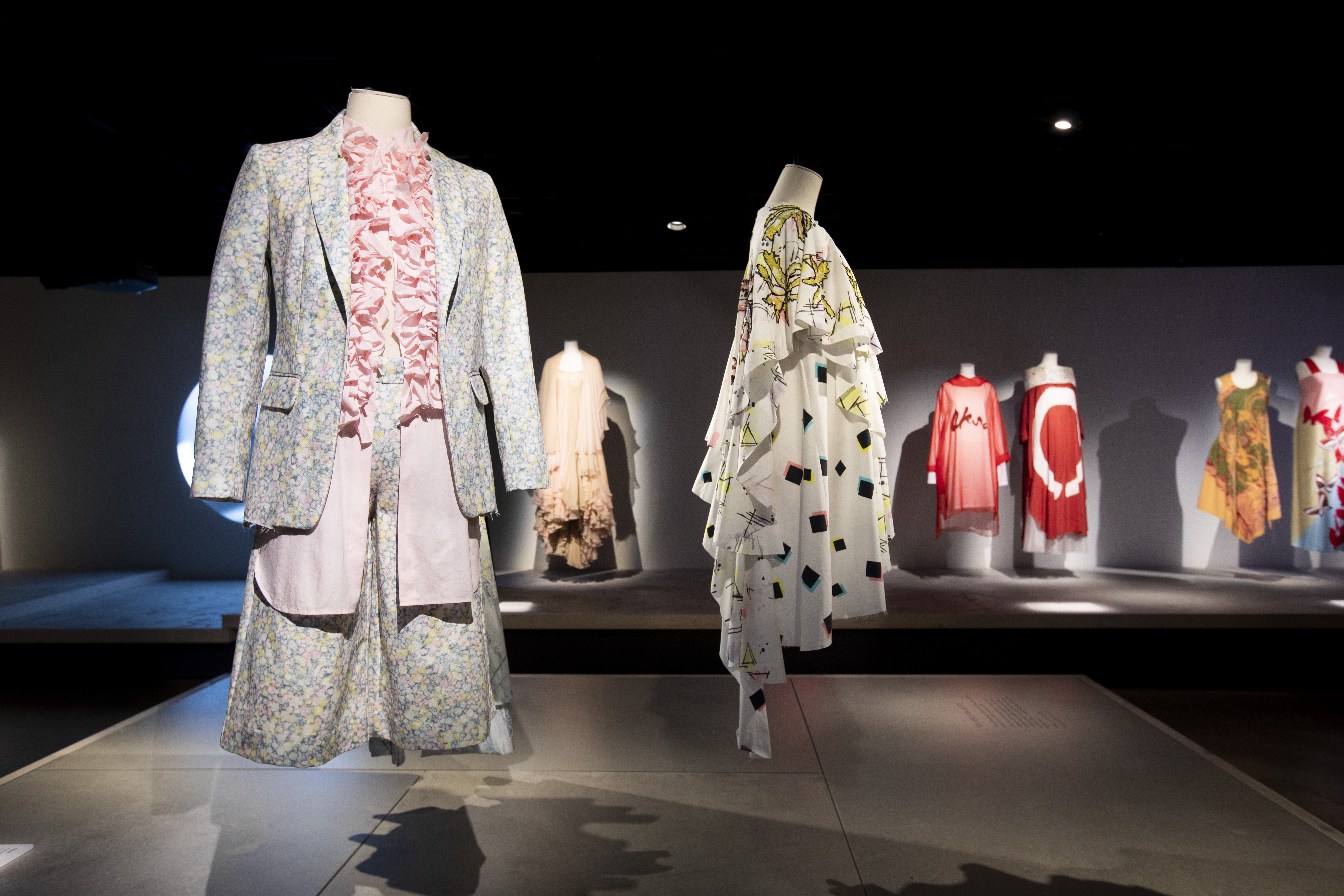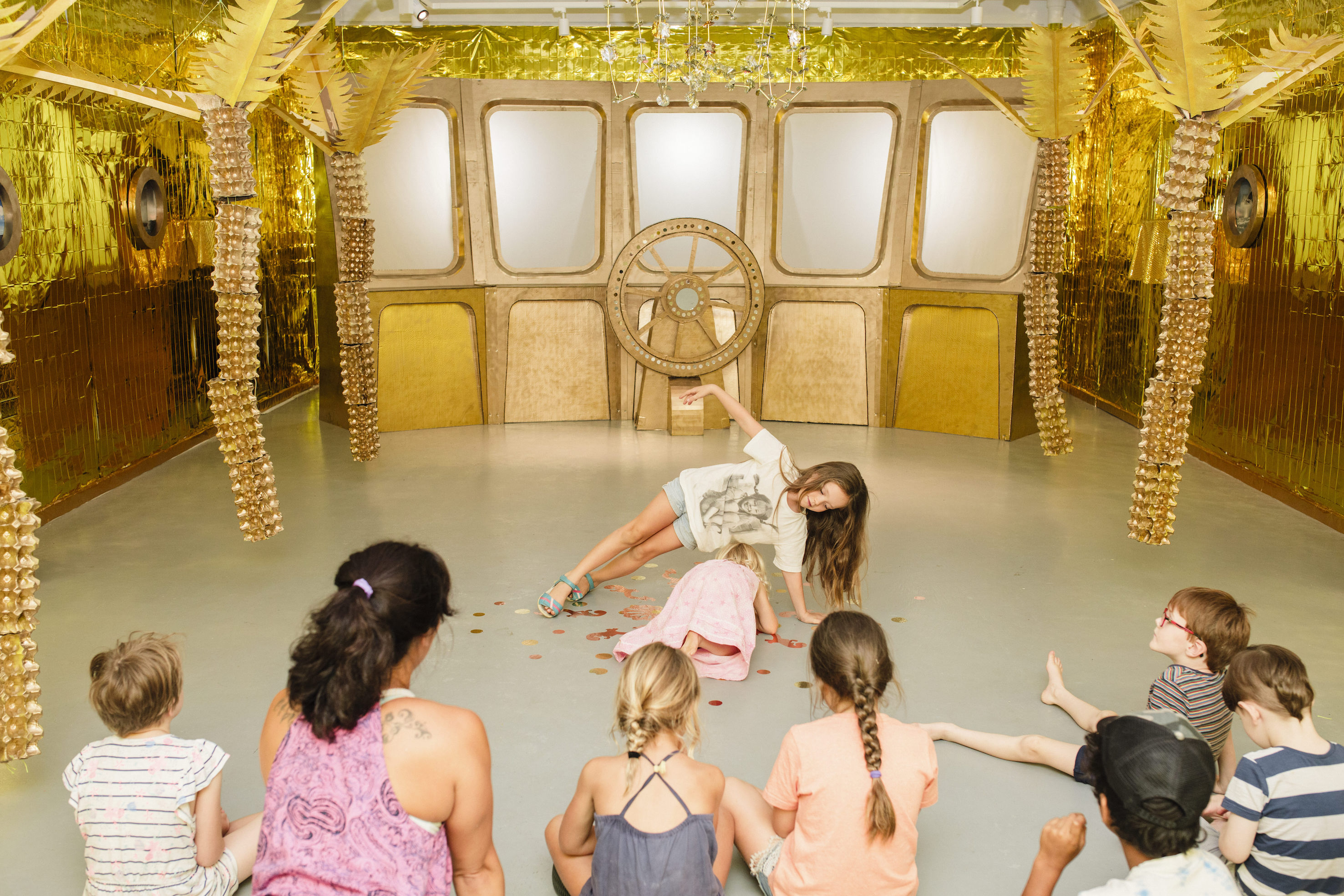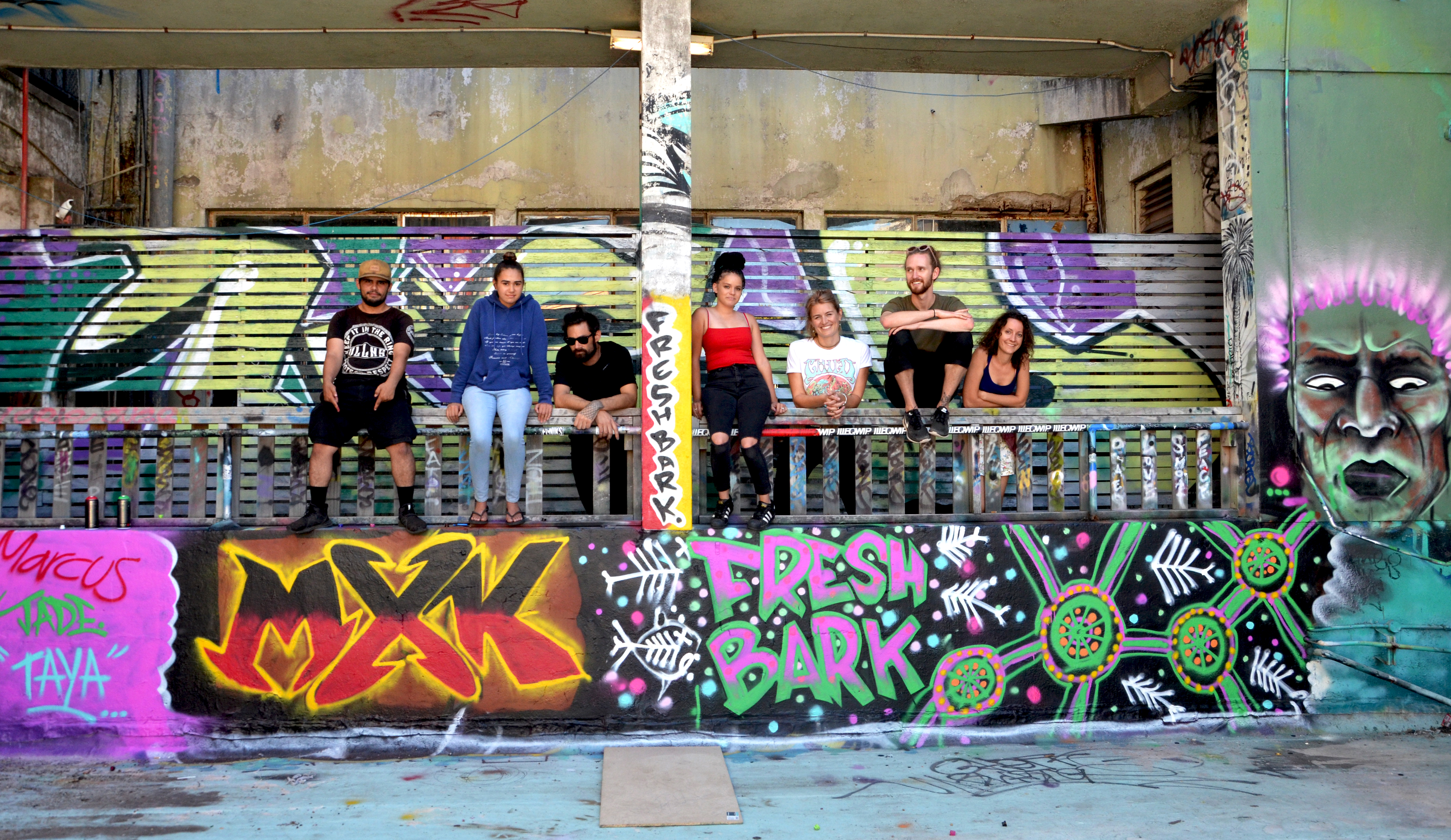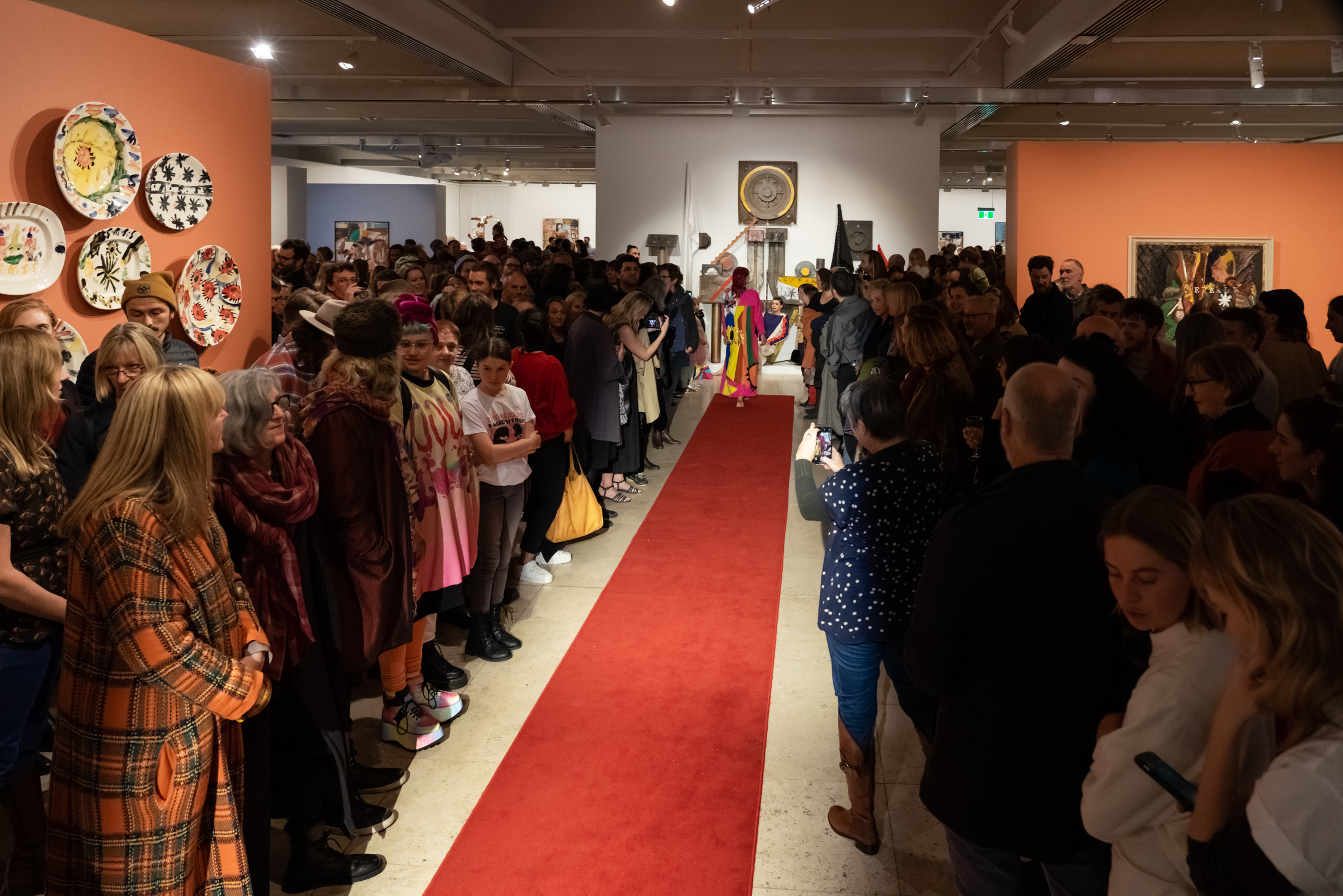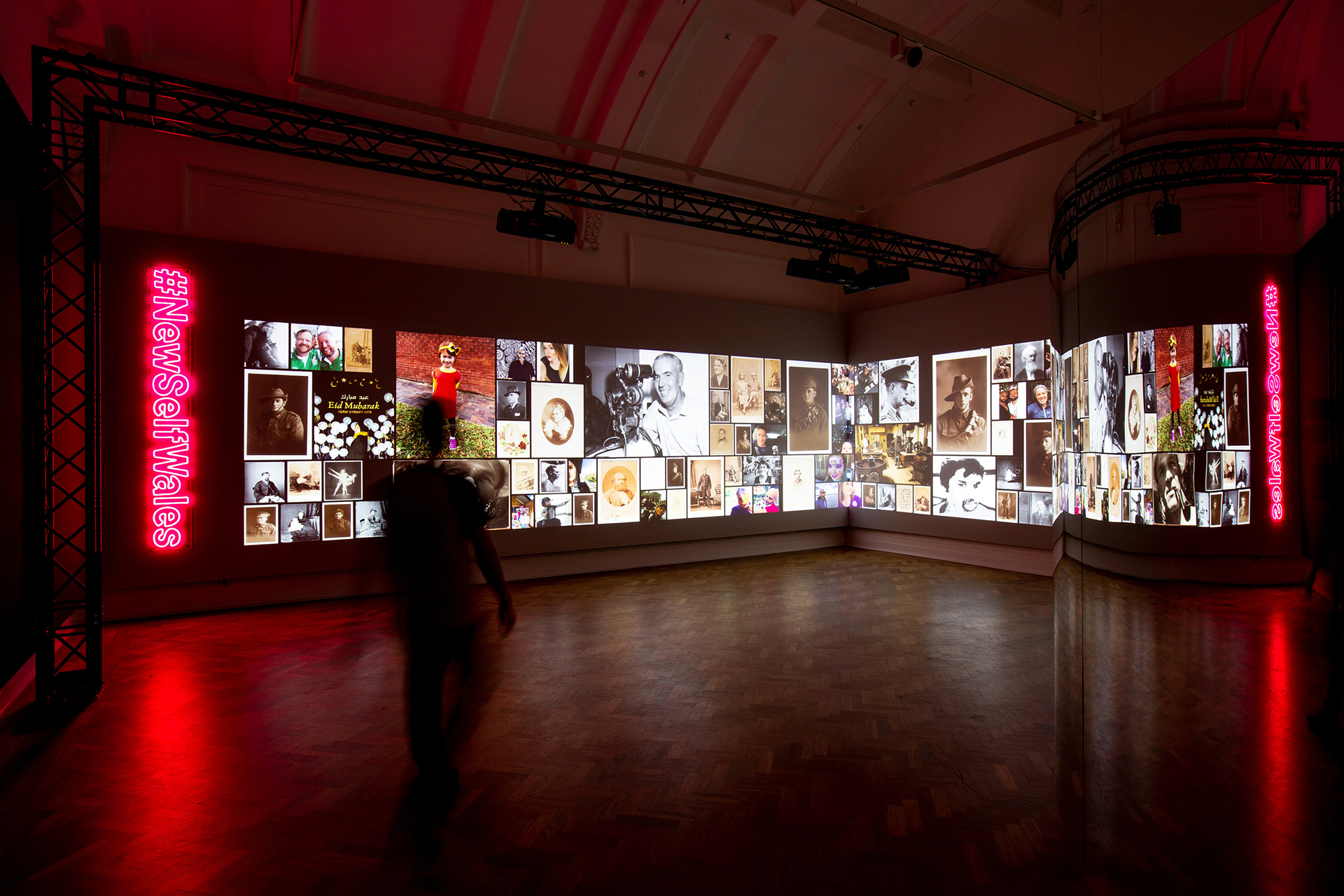Winners 2019
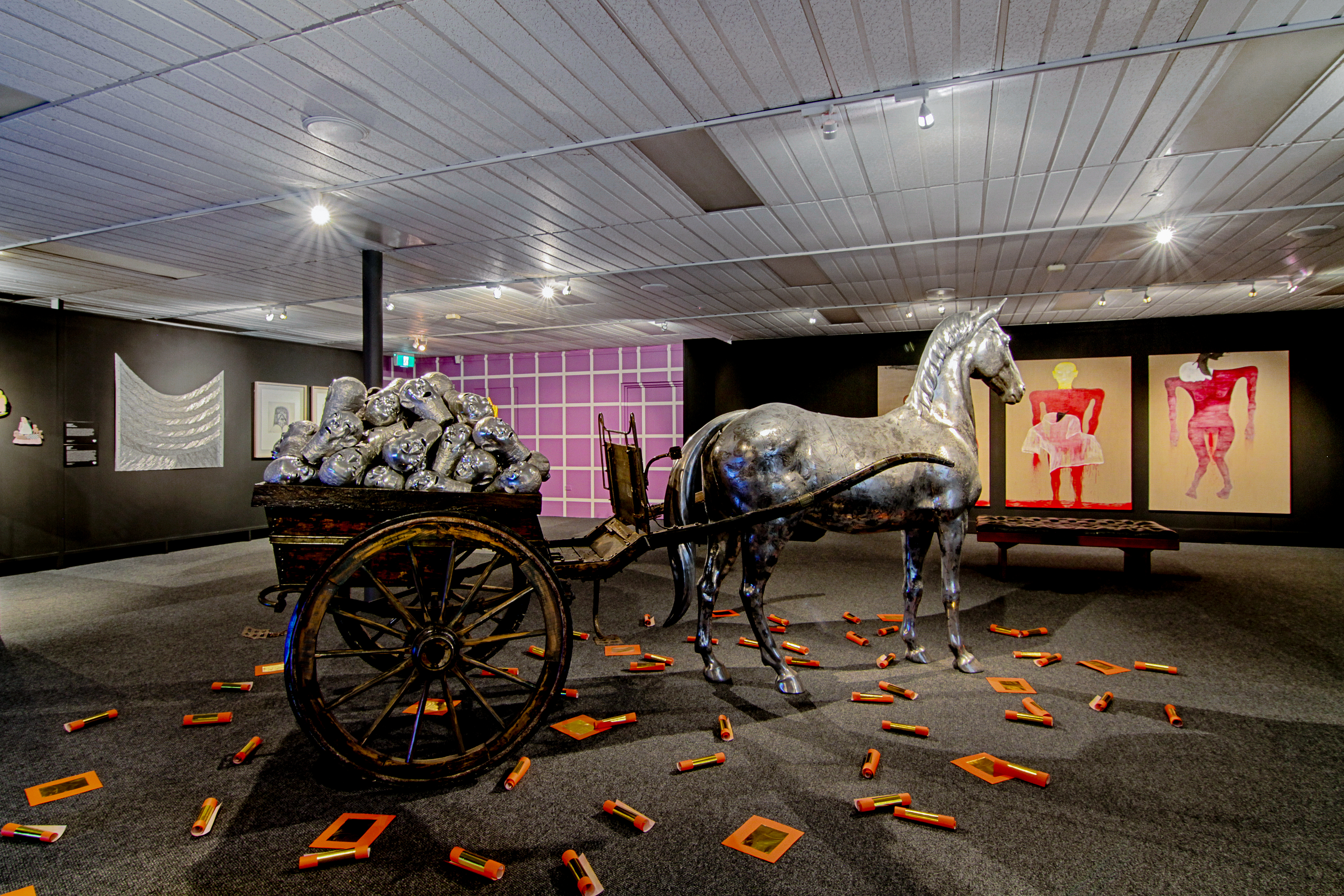
EXHIBITION PROJECTS – GALLERIES: Winner
Bega Valley Regional Gallery - South/East Interference Vol.2
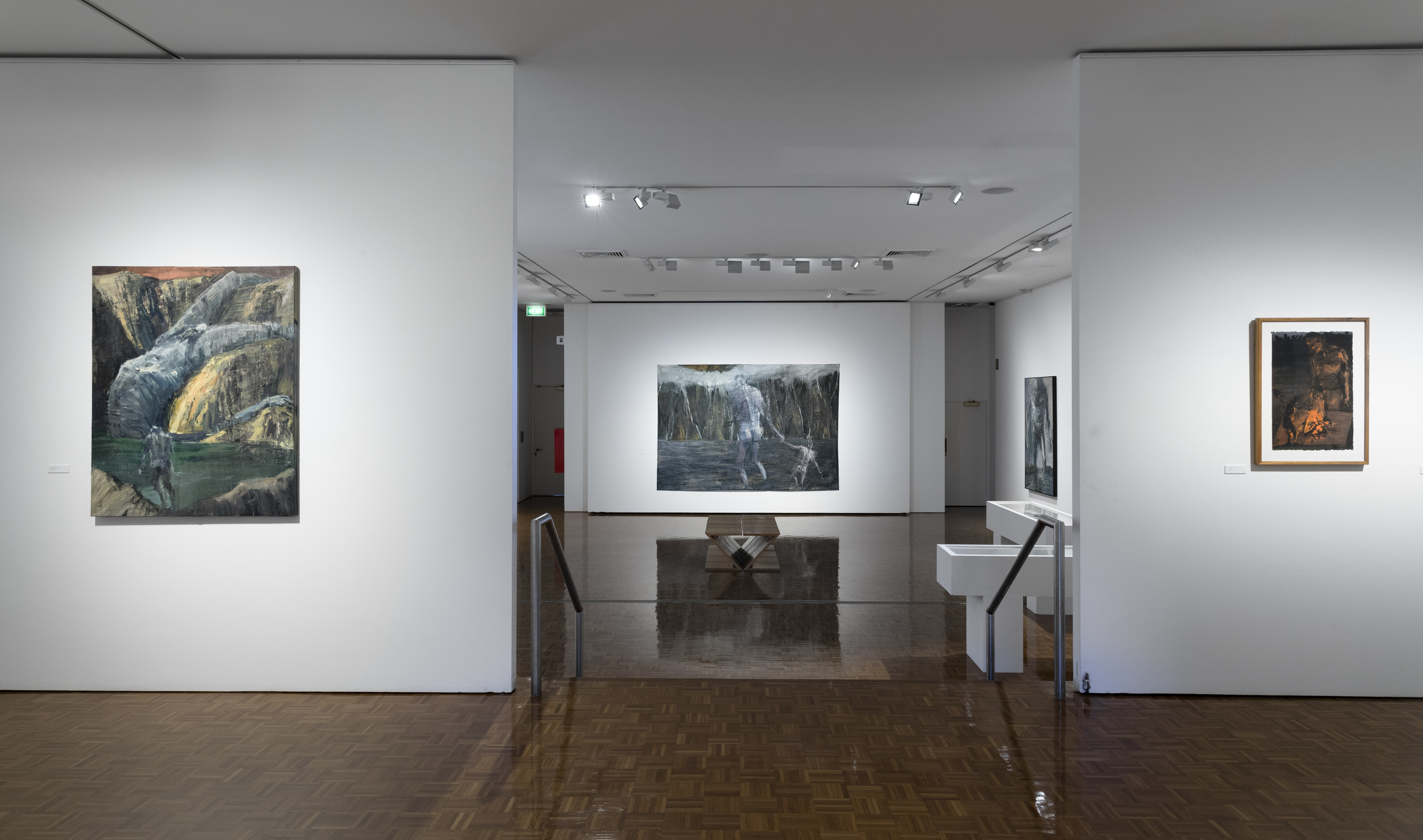
EXHIBITION PROJECTS – GALLERIES: Highly commended
Delmar Gallery, Trinity Grammar School - Euan Macleod: Guardian

EXHIBITION PROJECTS – GALLERIES: Winner
Hazelhurst Arts Centre - Weapons for the soldier: protecting country, culture and family
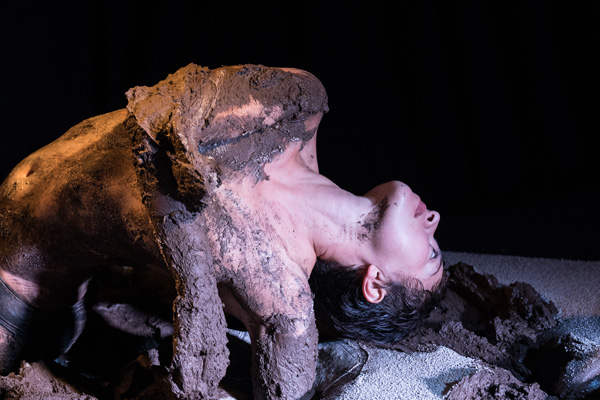
Dobell Exhibition Grant
Performance as part of Sodeisha: Connected to Australia at Newcastle Art Gallery. Kristina Chan, 2018. Photography: Alison Laird & Ashley de Prazer

EXHIBITION PROJECTS – GALLERIES: Winner
Museum of Contemporary Art Australia - John Mawurndjul: I am the old and the new

EXHIBITION PROJECTS – MUSEUMS: Winner
Berrima District Museum - A Butcher A Baker A bunch of Makers
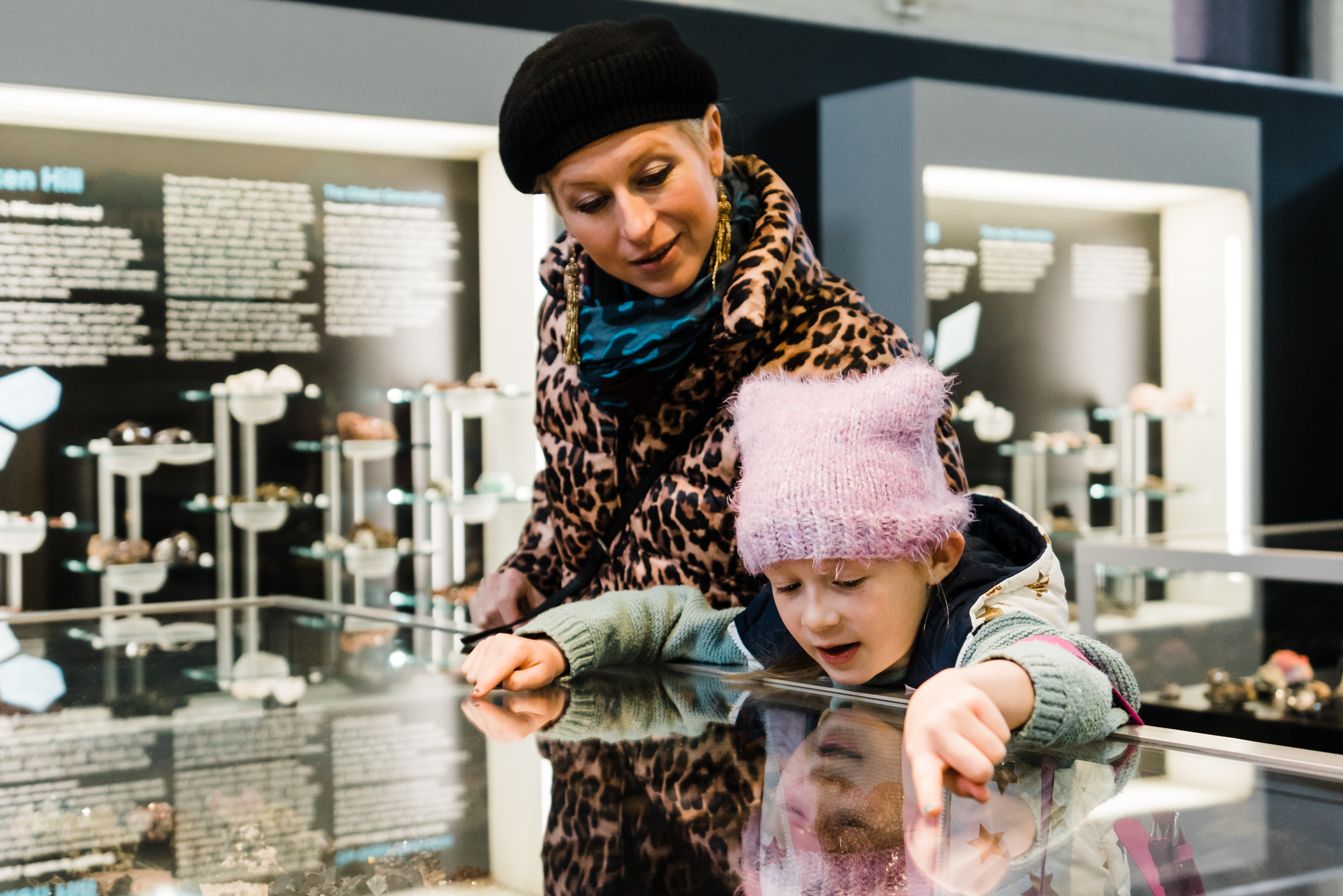
EXHIBITION PROJECTS – MUSEUMS: Highly Commended
Australian Fossil and Mineral Museum - The Albert Chapman Collection: remarkable minerals from the Australian Museum
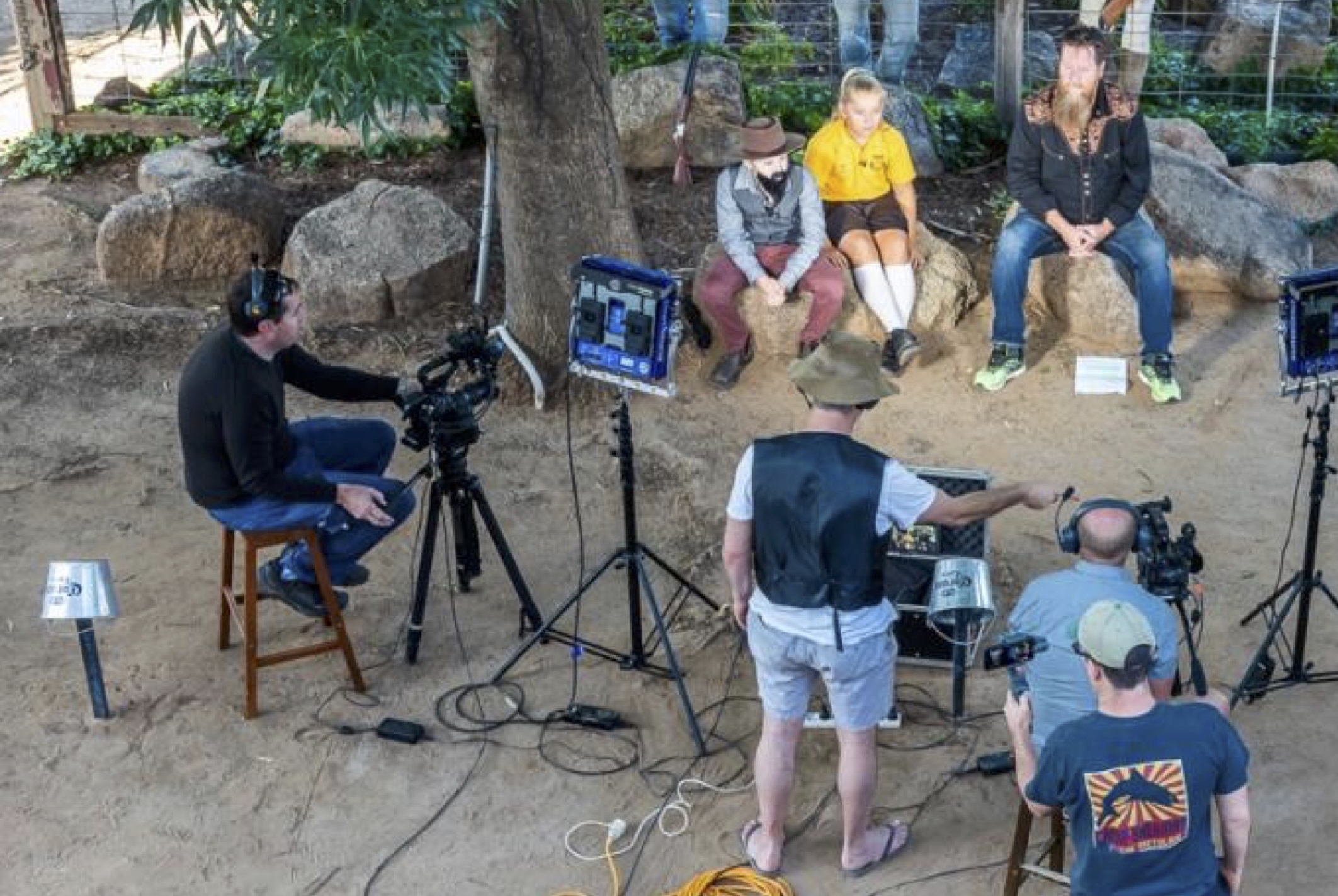
ENGAGEMENT PROGRAMS: Highly Commended
Eugowra Museum & Bushranger Centre - Bigger than Ben Hall
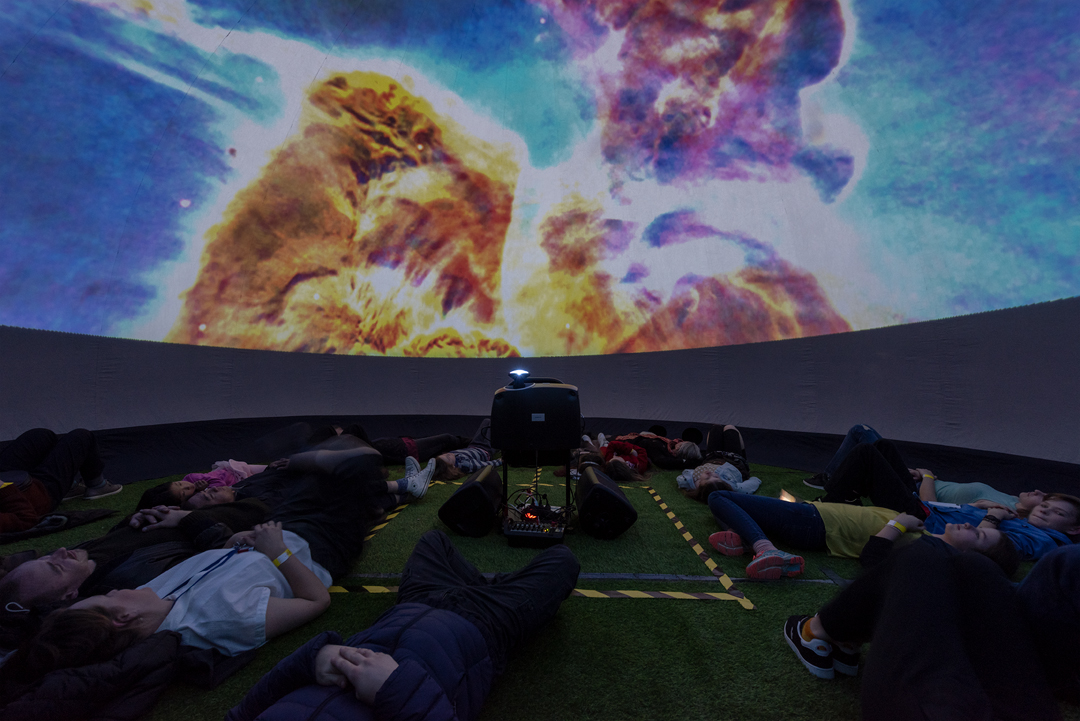
ENGAGEMENT PROGRAMS: Highly Commended
Blue Mountains Cultural Centre - Exploring Aboriginal Astronomy through Cross-disciplinary Programs

ENGAGEMENT PROGRAMS: Highly Commended
Maitland Regional Art Gallery - Stories from Wonnarua Country

CAPACITY BUILDING, CAPITAL & SUSTAINABILITY PROGRAMS: Winner
Bathurst Regional Art Gallery - RE-ORG Bathurst
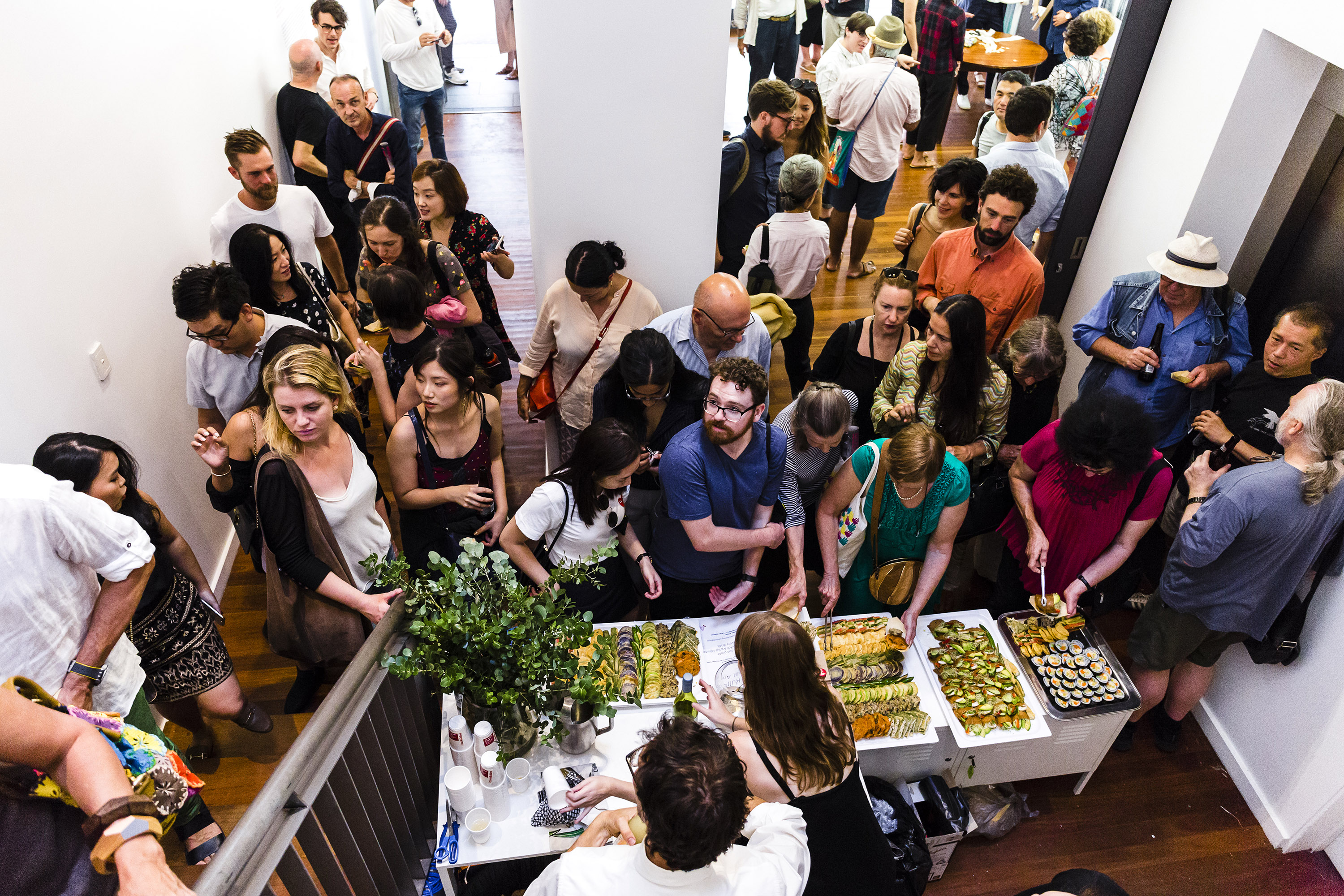
CAPACITY BUILDING, CAPITAL & SUSTAINABILITY PROGRAMS: Highly Commended
4A Centre for Contemporary Asian Art - Sustainability Plan: Certified Carbon Neutral
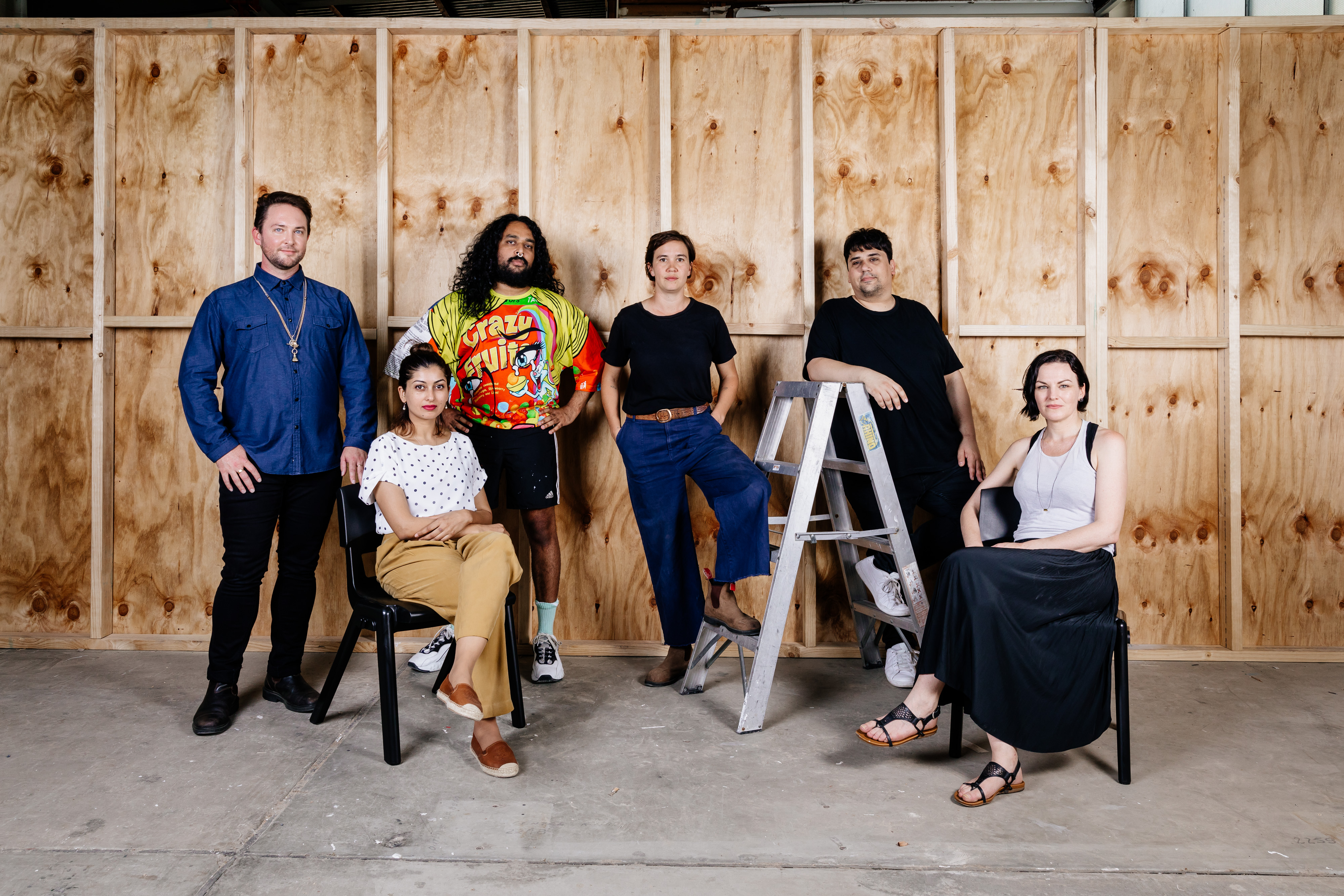
CAPACITY BUILDING, CAPITAL & SUSTAINABILITY PROGRAMS: Winner
Parramatta Artists’ Studios - Expansion of Parramatta Artists’ Studios with new artists’ studio facility in Rydalmere
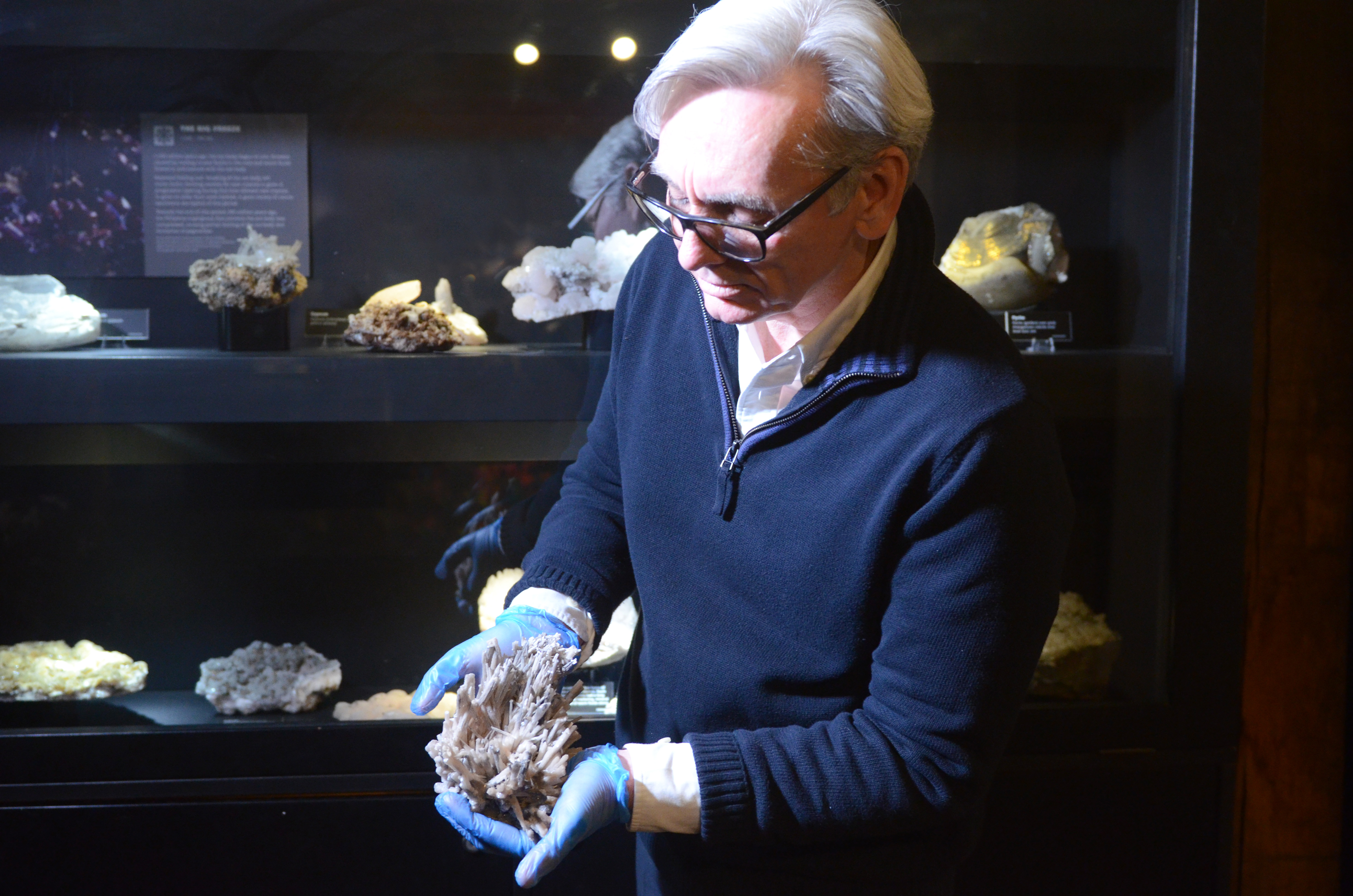
CAPACITY BUILDING, CAPITAL & SUSTAINABILITY PROGRAMS: Highly Commended
Broken Hill Regional Art Gallery and Albert Kersten Mining and Minerals Museum (GeoCentre) - Australia’s First Heritage Listed City Goes Digital

CAPACITY BUILDING, CAPITAL & SUSTAINABILITY PROGRAMS: Highly Commended
Golden Memories Millthorpe Museum - Exhibition Pavilion and Pioneer’s Gallery Refurbishment

INDIVIDUAL ACHIEVEMENT - PAID: Winner
Lee-Anne Hall Former Director, Penrith Regional Gallery & The Lewers Bequest
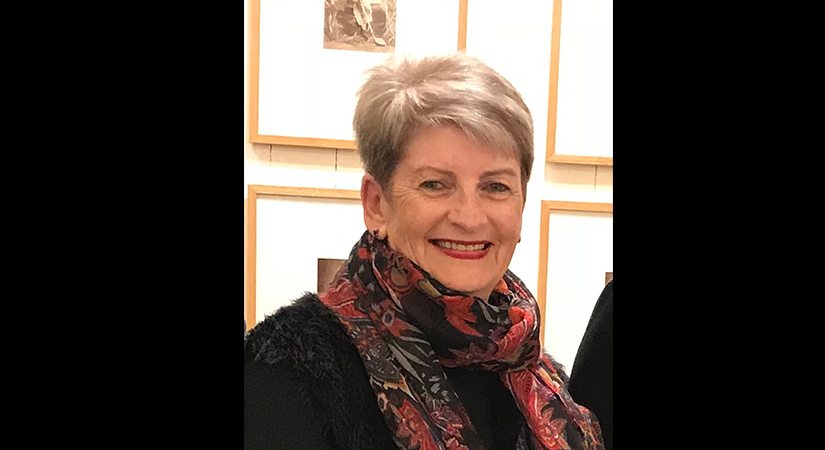
INDIVIDUAL ACHIEVEMENT - VOLUNTEER: Winner
Marea Buist President, Port of Yamba Historical Society / Yamba Museum
| EXHIBITION PROJECTS – GALLERIES VOLUNTEER ORGANISATIONS OR ORGANISATIONS WITH 2 OR LESS PAID STAFF |
Winner
Bega Valley Regional Gallery
South/East Interference Vol.2
Bringing together 6 mid-career contemporary artists from Indonesia, the Northern Territory and New South Wales, this exhibition explored themes of place and identity in an Australasian context.
The exhibition featured the vivacious ceramics of Sri-Lankan-born, Sydney-based Ramesh Mario Nithiyendran; shadow puppets by Sydney and Jogja-based Jumaadi; subversive and comical political paintings by Chayni Henry; Val Wens’ performance and documentary photography; paintings by Yolngu artist Gunybi Ganambarr; and Indonesian artist Dadang Christanto whose works honour victims of crimes against humanity.
“They are stories in progress, small moments in the long narrative arc that unfolds in real time over the course of an artist’s career. The show… presents vivid moments of lives in progress, the thematic unity of this collective self-expression drawing together a web of connecting ideas, approaches and themes.”*
Through promoting diverse responses to place and identity, the exhibition aimed to engage audiences with the complexities of our Australasian context and challenge cultural parochialism.
Highly Commended
Delmar Gallery, Trinity Grammar School
Euan Macleod: Guardian
In this pilot program, Delmar Gallery (in association with 3:33 Art Projects) collaborated with 5 selected year 10 and 11 students from Trinity Grammar School for the inaugural Young Curators program.
Working with award-winning Sydney painter Euan Macleod, student curators Lewis Dobbin, Euan Germanos, Lewis Kanellos, Alexi Little, and James Wang were guided through the process of researching and developing an exhibition of Macleod’s works.
Drawn to the recurring motif of the guardian figure, the students selected over 40 paintings, sketches and preliminary drawings, spanning 1983 to 2019. They afforded a partial but long view of Macleod’s work, that amounted to a refreshing look at how his work has developed over time. Many of the earlier works had never been exhibited before.
Programming for the show included a floor talk by the student curators; a concert by the Muffat Collective; Euan Macleod in conversation with the Gallery curator; four workshops for primary school students; and a talk for a local retirement village.
| EXHIBITION PROJECTS – GALLERIES SMALL/MEDIUM ORGANISATIONS WITH 3 – 10 PAID STAFF |
Winner
Hazelhurst Arts Centre
Weapons for the soldier: protecting country, culture and family
Initiated by the young men of the Anangu Pitjantjatjara Yankunytjatjara (APY) Lands, this exhibition brought together Indigenous and non-Indigenous Australian artists to examine complex themes of weaponry, warfare, and protecting country. It is the second major partnership project between the Hazelhurst Arts Centre and APY Art Centre Collective.
Developed during the ANZAC centenary, the exhibition presents a unique dialogue around multi-geographical and multi-generational fights for land, country and culture, and how they relate to resistance, resilience and keeping culture strong. The exhibition featured 52 artworks and was the first Anangu-curated project (a men’s project supported by Anangu women) where young men were empowered to connect with their peers and shape their futures through artistic collaboration and curation – challenging norms while still maintaining cultural protocol.
The exhibition was accompanied by videos of artist interviews, a family trail, exhibition tours, a launch with Anangu performances, artist talks, story time, workshops, and an Art Engage dementia group. Visitors had overwhelmingly positive reactions to the exhibition, noting the impact of the artists’ thought-provoking and powerful messages of resilience, strength and reconciliation.
Highly Commended
UTS ART
Void
This exhibition explored the ways in which artists visually articulate the unknown as space, time and landscape. Curated by Emily McDaniel, Void brought together contemporary Aboriginal artistic practice from across the country.
Encompassing ceramics, sculpture, painting, photography and drawing, Void included the work of ten contemporary Aboriginal artists: Hayley Millar-Baker, Danièle Hromek, Jonathan Jones, Mabel Juli, John Mawurndjul AM, Dr Thancoupie Gloria Fletcher AO, Andy Snelgar, James Tylor, Jennifer Wurrkidj and Josephine Wurrkidj. The artists presented in this exhibition do not simply define the void as denoting a lack, but rather they utilise form to represent the formless.
The exhibition was accompanied by artist and curator talks, a panel discussion and yarning circles featuring First Nations speakers including Larissa Behrendt, Alison Page, Shannon Foster and Danièle Hromek, as well as an exhibition catalogue designed by Yuwaalaraay artist Lucy Simpson and featuring a foreword by Bruce Pascoe. A digital education kit and school workshop program were produced in collaboration between Indigenous educators and Gallery staff.
Highly Commended
Newcastle Art Gallery
SODEISHA: Connected to Australia
Following a 40-year relationship with pioneering contemporary ceramics movement, Sodeisha, this exhibition explored the legacy of the artists and their influences on contemporary Australian and Japanese ceramic arts practice.
In 1979, Newcastle Art Gallery hosted the exhibition SODEISHA: Avant-garde Japanese Ceramics. At the time, Sodeisha had already built a reputation for defying tradition and producing non functional ceramics. In 1981, 58 of these works were donated to Newcastle, making it the most important collection of Sodeisha ceramics outside of Japan.
For the 2019 exhibition, Professor Kevin White (Australia) and Satoru Hoshino (Japan), an original Sodeisha member, engaged five Australian (Alterfact, Julie Bartholomew, Penny Byrne, Juz Kitson, and Kenji Uranishi) and five Japanese (Takashi Hinoda, Satoru Hoshino, Yusaku Ishida, Rokubei Kiyomizu, and Hideo Matsumoto) contemporary ceramists, alongside 32 Sodeisha artists from the Newcastle Art Gallery collection.
The exhibition included a bilingual catalogue; a commissioned performance, Crawling through mud (reinterpreted from the original by Kazuo Shiraga in 1955); masterclasses with Satoru Hoshino; Japanese Omatsuri; VR demonstrations; Art Cart events for children; and guided tours. Overall, the program was highly successful with over 16,000 visitors.
| EXHIBITION PROJECTS – GALLERIES LARGE ORGANISATIONS WITH 11 OR MORE PAID STAFF |
Winner
Museum of Contemporary Art Australia
John Mawurndjul: I am the old and the new
Developed and presented in partnership with the Art Gallery of South Australia and Maningrida Arts & Culture, this exhibition presented the work of one of Australia’s leading contemporary artists, master bark painter John Mawurndjul AM, with an accompanying bilingual (Kuninjku and English) monograph publication and a dedicated website.
The exhibition, led by the artist in close collaboration with the curatorial team, reunited bark paintings and sculptures from national and international collections made across a 40-year period and shared the stories of Kuninjku culture and significant locations surrounding the artist’s homelands in western Arnhem Land.
This project was ground breaking in positioning Kuninjku Aboriginal language throughout the exhibition as a first language. Bilingual throughout, it describes in Kuninjku (and then English) the artist’s places of cultural significance known as kunred, as well as ancestral spirits – or Djang – that resurface time and time again in his art-making.
Public programs created multiple pathways for audiences to engage with the project, including artist talks, panel discussions, and tailored family, youth and school programs which engaged educators and students with deeper insights into contemporary Indigenous art practice.
| EXHIBITION PROJECTS – MUSEUMS VOLUNTEER ORGANISATIONS OR ORGANISATIONS WITH 2 OR LESS PAID STAFF |
Winner
Berrima District Museum
A Butcher A Baker A bunch of Makers
This exhibition celebrated Southern Highlands artisans in the Museum’s new state-of-the-art digital gallery. Combining breathtaking photography, video and handmade artworks spanning 70 years, it showcased the very best talent of the region including work by sculptor David Ball, weavers Natalie Miller and Brooke Munro, painter James King, metal artist Heidi McGeogh, and leatherworker Trevor Jones. Local photographer Ashley Mackevicius shot all the imagery included in the show.
A Butcher A Baker a bunch of Makers engaged visitors with its unique juxtaposition of beautiful age-old skills with technology. Viewers were entranced by local makers sharing their love of everything from breadmaking to basketry, weaving, ceramics, painting inspired by the history of the area, silversmithing and leatherwork, all told through audio, video and photography on digital screens.
The exhibition was very well received and school holidays were especially successful with the exhibition open every day. Many locals commented that they didn’t know about the Museum prior to the exhibition. Since the opening of the new Digital Gallery, local community visitation
| EXHIBITION PROJECTS – MUSEUMS SMALL/MEDIUM ORGANISATIONS WITH 3 – 10 PAID STAFF |
Winner
Orange Regional Museum
All in a Day’s Work
This exhibition was developed in partnership with the Orange & District Historical Society and coincided with their 70th anniversary year. The exhibition provided an intriguing window into the nature and experience of work in Orange from 1955 to 1974, featuring 79 photographs from the Central Western Daily newspaper archives which have over 1.2 million negatives.
Curated by staff from the Historical Society, the exhibition is educational and aesthetic, bringing together often beautiful historic images with engaging stories of the past. Through innovative exhibition design, the images are displayed in multiple ways – on stylised workbenches with interpretive text and as immersive digital projections.
This multi-layered approach is enhanced with oral history interviews, and All in a Day’s Play, a colourful interactive activity designed by artists Biddy Maroney and Sonny Day of WeBuyYouKids that invites children (and the young at heart) to investigate the workplaces, uniforms and equipment of yesteryear.
Public programs included an exhibition opening, a curators floor talk focused on the value of regional community partnerships and historical narratives, and programs exploring contemporary photojournalism.
Highly Commended
Australian Fossil and Mineral Museum
The Albert Chapman Collection: remarkable minerals from the Australian Museum
Complementing the permanent display of the Sommerville Collection, featuring some of the finest and rarest minerals and fossils in the world, the display of the Albert Chapman Collection adds over 570 additional minerals to the Museum’s offering. This landmark combination, forming the single temporary exhibition, makes for the largest and most significant display of valuable and rare minerals in the Southern Hemisphere.
The Albert Chapman Collection was able to travel to Bathurst while its permanent home, the Australian Museum, undergoes significant renovations. For this exhibition, staff from both organisations collaborated closely on the design, curation, delivery, installation and promotion of the exhibition. The Australian Museum’s Mineralogy and Conservation teams advised on the project and the Exhibitions team worked to re-use and re-design the showcases to fit within the new display space.
The unification of the collections for this exhibition is highly fitting. Fellow collectors in the 20th Century, Albert Chapman was in many ways a mentor to Warren Sommerville. Both collections are of great cultural significance and highly regarded for their mineralogical diversity and integrity, aesthetic appeal and high Australian content. Together they tell a story of minerals, fossils and
| EXHIBITION PROJECTS – MUSEUMS LARGE ORGANISATIONS WITH 11 OR MORE PAID STAFF |
Winner
Museum of Applied Arts and Sciences
Akira Isogawa
Known for his fusion of Asian tradition with Australian ease, Akira Isogawa is one of our country’s most loved and celebrated designers. This exhibition was the first to explore his 25 year career, revealing his background, impulses and cultural influences.
The meditative exhibition space elevated Isogawa’s works as art objects and to evoke the serenity of Japanese art and design which form the fundamental basis of his practice and craftsmanship. This was furthered evoked through the tatami mat; calico-wrapped vertical panels in the interactive Maker’s Space; and textures of concrete and timber featured throughout.
Garments were presented on minimal, suspended dress forms or in artfully folded flat displays which allowed the visitor to appreciate the fine detail and craftsmanship close-up. The exhibition was framed by a series of commissioned short films which focused on Isogawa’s hand sewing, origami folding, cutting, and signing his iconic calligraphic signature in flowing ink.
Programming for the exhibition included hands-on workshops in the Maker’s Studio by Isogawa; an artist in residence program for the 2019 Sydney Design Festival; curator tours; masterclasses; and an intimate In Conversation.
| ENGAGEMENT PROGRAMS VOLUNTEER ORGANISATIONS OR ORGANISATIONS WITH 2 OR LESS PAID STAFF |
Winner
The Lock-Up
ARGO PACIFICO KIDS CLUB
Designed to coincide with the exhibition ARGO PACIFICO, this program aimed to spark the imagination of children and to provide an accessible point of creative engagement with contemporary art. Featuring the work of local artists Jen Denzin and Oliver Harlan, the exhibition space was transformed into a real-life carnival cruise ship.
Consisting of making and performative workshops, the program took children from the ages of 5-13 years on a voyage of cultural connection with local artistic groups and local art practitioners. Making workshops included towel/fruit sculpture workshops; under the sea sculpture workshops; pirate hats origami; and Bingo with The Captain. Performative workshops included contemporary underwater dance and beginner’s ukulele workshops.
The programs were targeted at children aged between 5-13 and were inclusive for young people from culturally and linguistically diverse backgrounds. The programs were highly successful and the Gallery achieved its highest attendance figures for any exhibition since relaunching in 2014, with ARGO PACIFIC KIDS CLUB receiving triple its attendance target.
Highly Commended
Eugowra Museum & Bushranger Centre
Bigger than Ben Hall
Originally envisaged as a modest inter-school broadcast, this project grew to become an ambitious ‘1860s breakfast television’ webcast delivered live to nearly 100 schools with approximately 3,000 students watching, and over 250 in-person audience members.
The broadcast featured a re-enactment in Eugowra, in Wiradjuri country, which was the site where bushrangers bailed up a gold escort coach on 15 June 1862. The gang took £14,000 worth of gold and banknotes, making it the largest gold robbery in Australia’s history.
Over 300 students participated in examining primary historical sources as raw material for new creative expression, such as scripts and films. Students worked with senior volunteer curators to interrogate historical records and explore themes of mythologising and rewriting history for various agendas.
The culminating re-enactment was watched on the last day of school by 58 NSW and 38 American schools. It succeeded in engaging young people in the history of their lived environment and enthused them to research and interrogate the accepted versions of history.
| ENGAGEMENT PROGRAMS SMALL/MEDIUM ORGANISATIONS WITH 3 – 10 PAID STAFF |
Winner
Broken Hill Regional Art Gallery
FRESHbark
This mentorship program for young Aboriginal artists in the far west utilised intergenerational connections to engage and enable their career opportunities. The program provided participants with access to creative technologies, resources, materials, museum and gallery training, and funded research trips.
Developed in partnership with Maari Ma Aboriginal Health Corporation, FRESHbark provided a new perspective on collaboration between emerging art practitioners and programming at Broken Hill Regional Art Gallery. The overall aim of the project was to affect both short and long-term social outcomes and capacity building.
The program covered funding for travel; free-of-charge studio space; museum and gallery training; state and national collections research; mentorship
and workshops with contemporary artists; and confidence-building and self-agency for artists. The program was also meaningful as it improved communication and understanding between the Gallery and young Aboriginal artists as well as the local Aboriginal community more broadly. The program culminated in an exhibition of the same name which received 5,000 visitors and developed a significant online following.
Highly Commended
Blue Mountains Cultural Centre
Exploring Aboriginal Astronomy through Cross-disciplinary Programs
This engaging 6-week series of programs was organised by the Blue Mountains Cultural Centre to celebrate NAIDOC and complement John South: Skyworld, an exhibition exploring Aboriginal astronomy through film and installation. The program included workshops, talks, film screenings, education programs, stargazing, and family friendly events, attracting audiences from Sydney, the Blue Mountains and regional NSW.
The events aimed to reveal connections between Aboriginal art, culture and astronomy, and included collaborations with Aboriginal practitioners featured the Wagana Dancers (Australia) and Raven Spirit Dance Company (Canada), and leading experts in Aboriginal astronomy such as astronomer and science communicator, Kirsten Banks (Wiradjuri), Senior Euahlayi Law Man and Elder Ghillar Michael Anderson, and Aboriginal cosmology expert Duane Hamacher. Local Elders also gave a Welcome to Country and smoking ceremony.
Additionally, an extensive education and outreach program was delivered. To date, these events were the most extensive and well-attended of the Centre’s annual NAIDOC celebrations.
Highly Commended
Maitland Regional Art Gallery
Stories from Wonnarua Country
Produced in partnership with the Junior Aboriginal Education Groups, this program invigorated 7 local schools to explore what it meant to be living on Wonnarua Country today. The program consisted of workshops, community outreach and art-making, culminating in the exhibition Stories from Wonnarua Country.
For the project, Maitland Regional Art Gallery engaged Mindaribba Local Aboriginal Land Council, Maitland Aboriginal Education Consultative Group, and Wonnarua Elders. This collaboration facilitated 3 full-day workshops wherein students engaged with Wonnarua stories, art, culture and language including a day on Country at Baiame’s Cave. Following the workshops, students focussed on art-making within their school communities with the Gallery’s outreach support.
Eighteen months of meaningful engagement and thoughtful and responsive art-making culminated in the student leaders and their support staff actively curating and installing the exhibition in the Gallery. Through the program, the participants were empowered to share their experience of Country with the broader Maitland community. The exhibition was highly successful, receiving over 20,000 visitors.
Highly Commended
Newcastle Art Gallery
Last Fridays
This series of monthly late-night programs drew in the crowds with free events and opened the Gallery as a social space. Eleven programs were produced around dynamic themes such as Party Like It’s 1979, Beats and Botanicals, and Japanese Omatsuri. The program enabled the Gallery to engage and collaborate with local and national emerging and established artists, makers and musicians, bringing people together to connect through a range of festivities, celebrations and cultures.
The only regular extended hours program in the Hunter region, Last Fridays received a significant increase in attendance compared to the previous year. Programming focused on a younger market, creating a relaxed party atmosphere and multiple activations happening simultaneously to encourage visitors to wander and discover. Visitors were able to explore exhibitions and enjoy a drink at a pop-up bar alongside layered programming with musicians, poets, zine makers, performers, dancers, perfumiers, florists, local community and cultural groups, and emerging artist collectives.
Through this program, the Gallery was able to meet its goal of reaching a younger audience demographic.
| ENGAGEMENT PROGRAMS LARGE ORGANISATIONS WITH 11 OR MORE PAID STAFF |
Winner
State Library of NSW and DX Lab
#NewSelfWales
This inclusive, community-generated online exhibition utilised extensive UX research, design thinking, and collection research to capture the faces of NSW.
The collaborators took multiple approaches to gather portraits from the public, asking people across the state to share their portraits on Instagram using #NewSelfWales resulting in almost 1,000 included in the exhibition. An interactive bus shelter was erected on George Street and in-situ photo booths were installed in the exhibition space, inviting pedestrians and Library visitors to take and submit photos that were instantly added to the digital display. In addition, this project offered the unique opportunity to showcase the Library’s
collection en mass with over 5,000 portraits chosen to be displayed alongside the submitted photos.
The program was highly successful, with over 12,000 portraits in the final selection, making for a robust and varied profile of the state, captured in time. The project enabled the Library to reach new audiences across NSW and delighted visitors through the welcoming and fun experience of sharing portraits of themselves. As the digital works continue to be exhibited online, the project life extends beyond the physical exhibition, and will be a zeitgeist of 2018 for future generations to view.
Highly Commended
Australian Museum, Leo Kelly Blacktown Arts Centre, Casula Powerhouse Arts Centre
Oceania Rising
This series of community-directed discussions, films, arts events, exhibitions, workshops and performances was a collaborative effort to broaden public engagement with climate issues. The partnership aimed to connect the two Art Centres’ local Western Sydney Pasifika communities with the Museum’s world-renowned Pacific collection.
The programs enabled visitors to think, discuss and share ideas; to create ways for their voices to be heard and to recognise their potential to generate action in relation to climate change issues. Programs across the three institutions included the development of the Wayfinders exhibition which was accompanied by performances, participatory public programs and a Pacifika Festival; a cultural program co-curated by the NSW Cook Islands Community Council; an interactive installation by Samoan artist Latai Taumoepeau; and the acquisition and display of the video artwork Tuvalu by Samoan-Sydney artist Angela Tiatia at each of the participating organisations.
Reaching over 80,000 people, the program engaged wider audiences and enabled the ongoing action on climate change from within Pacific Islander communities.
Highly Commended
Museum of Contemporary Art Australia
Conversation Starters: Temperature Rising
This two-day event, attended by over 2,300 people, offered a wide range of talks, workshops, performances and films to provoke discussions around climate change. Inspired by Janet Laurence’s major survey After Nature, this event sought to provoke the exchange of ideas and thoughts.
The exciting line-up of events spanned a diverse range of programs with contemporary art as the starting point. A sold-out zero waste Friday evening dinner with Oz Harvest kicked off the program. Diners listened to three speakers who reflected on an ideal food world. Saturday began with an extraordinary panel of young people passionate about climate change, and Sunday was kids and families focused. Other highlights included vox pop interviews and Junk Percussion workshops and performance.
In a world where there are not many places left in which to debate and disagree, this program offered a space to hear diverse voices and utilised non-traditional forms of interaction to
| CAPACITY BUILDING, CAPITAL & SUSTAINABILITY PROGRAMS Less than $100,000 |
Winner
Bathurst Regional Art Gallery
RE-ORG Bathurst
Using methodology developed by ICCROM, UNESCO, and the Canadian Conservation Institute (CCI), this project saw the systematic, step-by-step improvement of access and management of the Bathurst Regional Council collections. The pilot project was undertaken by a team of post-graduate students from Melbourne University’s Grimwade Centre for Cultural Material Conservation in collaboration with Gallery staff.
For the project, policy and administrative recommendations were made and advice was given on housing, management, protection and long-term preservation of the collection. The project team also ensured that all 2,000 collection items were labelled, photographed, wrapped, and raised off the floor.
This significant undertaking resulted in real and lasting change in collections management practice at the Gallery – staff now being able to access over 90% of the collection in under 3 minutes (a process that previously took over one hour).
This ground-breaking project was successful in its aim to solve collection management issues, and now serves as a model for other small to medium sized galleries, particularly those in regional areas.
Highly Commended
4A Centre for Contemporary Asian Art
Sustainability Plan: Certified Carbon Neutral
In 2018, the Centre began investigating how the organisation could change towards more environmentally sustainable practices across both its local and international operations through implementing a Sustainability Plan. This included assessing various ways to measure and reduce energy use, and the goal of achieving a carbon neutral certification was set.
In order to achieve this target, the Centre undertook the National Carbon Offset Standard (NCOS) certification process, a voluntary standard set and regulated by the Department of Environment and Energy to manage greenhouse gas emissions and to achieve and maintain carbon neutrality each year.
Reviews were undertaken for the gallery’s electricity usage, freight, waste-to-landfill, recycling, advertising, paper usage, printing and office IT. Beyond this, they also identified the impact of their offsite programs including exhibitions, performances, symposiums, research trips, professional development opportunities, catering, travel and accommodation for artists, employees and contractors.
This self-funded process allowed the Centre to measure their annual carbon footprint, offset remaining emissions, and set sustainable goals with a long-term strategy. Notably, the Centre was the first art gallery or
| CAPACITY BUILDING, CAPITAL & SUSTAINABILITY PROGRAMS More than $100,000 |
Winner
Parramatta Artists’ Studios
Expansion of Parramatta Artists’ Studios with new artists’ studio facility in Rydalmere
In 2018, the Studios embarked on a strategic expansion of studio facilities in response to a 400% increase in demand for artist spaces. Guided by the City of Parramatta’s Cultural Plan and 12 years of organisational delivery, the studios in Rydalmere were launched, funded by the NSW Government’s Stronger Communities Fund.
Since launching in 2006, the original studio program in Parramatta has supported hundreds of artists by providing studio spaces for them to develop their practice, whilst also connecting them with a community of artist peers and arts professionals.
The new space consists of 6 warehouse-style artists’ studios, 30% larger than the existing studio with higher ceilings, improved ventilation and more flexibility for large-scale construction. Programming is underpinned by artist career sustainability by re-engaging former PAS artists and supporting new artists over long-term 2-year tenancies.
The new studio facilities were launched in March 2019 with 6 inaugural residents: Liam Benson, Emma Fielden, Mehwish Iqbal, Ramesh Mario Nithiyendran, Tom Polo and Yasmin Smith.
Highly Commended
Broken Hill Regional Art Gallery and Albert Kersten Mining and Minerals Museum (GeoCentre)
Australia’s First Heritage Listed City Goes Digital
This two-year project, scheduled for completion in October 2020, will see the digitisation of the full collections of the Gallery and GeoCentre with the aim to eventually have them publicly accessible online. The Gallery is the oldest of its kind in NSW and has an impressive permanent collection of around 2,000 works. The Geocentre has a rare collection of around 1,000 minerals and mining-related objects. Together they tell the story of mining in Australia and the history and importance of Broken Hill.
In addition to acquiring high quality photographs of the collection, the project also serves to address elements of collection management that have been overlooked for the last 115 years including copyright, provenance, legal title and acquisition information.
Two dedicated staff were assigned to this project and a conservation internship program was established with the University of Melbourne. The digitisation and public accessibility of the collections will be utilised for promotion, tourism, general interest, education, curation and research. The project has helped to ensure that the historical treasures of Broken Hill can be enjoyed by future generations.
Highly Commended
Golden Memories Millthorpe Museum
Exhibition Pavilion and Pioneer’s Gallery Refurbishment
This project involved the refurbishment of two of the Museum’s nine buildings, improving their functionality and revitalising the displays and exhibitions. Building works included the full insulation of the Exhibition Pavilion so that it could accommodate valuable historic items. The Pioneer’s Gallery (formally the old Catholic Convent School) was refurbished so that could host community functions.
The project engaged a variety of local businesses in the town and district, and importantly provided the opportunity for the Museum to reconsider its large collection and how it should be conserved, preserved and displayed to contemporary standards and practices. New lighting, display cabinets and climate controls were also incorporated into the refurbishments.
The refurbishment of the Pioneer’s Gallery as a function space has also opened it up as a possible income-generator, which is significant for a volunteer-run Museum. The project has breathed new life into the space and demonstrates the Museum’s commitment to preserving and sharing the history of the town and district, and contributing to the local community.
| Individual Achievement: Volunteer |
Marea Buist
President, Port of Yamba Historical Society / Yamba Museum
For over 20 years Marea has played an active role in the development of the Yamba Museum and has shared her passion for lifelong learning through organising an extensive number of workshops and mentorships. Marea has been responsible for leading, recruiting and developing a band of dedicated volunteers which has seen the Museum grow into the award-winning organisation it is today.
Marea has also been responsible for securing a large number of grants, including for a new museum building and, more recently, $250,000 to build a function room and Yaegl Interpretation Garden.
Additionally, through Marea’s regional leadership and coordination of the Far North Coast Chapter of the Australian Museums and Galleries Association (AMaGA), Marea has arranged training and professional support, and mentored and inspired hundreds of museum volunteers and workers across the region. Marea has also played an active role in advocating for the sector at a local, state and national level and it is through her persistent representation to local government that the region has been supported.
| Individual Achievement: Paid |
Lee-Anne Hall
Former Director, Penrith Regional Gallery & The Lewers Bequest
During her six years as Director, Lee-Anne programmed and delivered over 70 exhibitions; produced numerous public, educational and outreach programs; and overhauled the strategic and policy direction of the Gallery. Her leadership and support for the professional development of her staff, colleagues and external peers has made a lasting impact to the museum and gallery sector.
Lee-Anne’s major changes to the Gallery’s direction included leading capital improvements to the collection store; the acquisition of the Vernon CM database; geothermal climate control air-con and storage solutions; key artwork conservation; and securing funding.
Lee-Anne initiated a program of artist residencies which connected artists with the outer Western Sydney community. In line with this, she also initiated and developed the Modernist Research Centre for collection-based research, hosting postgraduate interns and academic research, cementing the Gallery as a significant Modernist heritage site and as one of Western Sydney’s premier public art galleries. Lee-Anne’s contributions to the Gallery and broader community have been deeply felt beyond her directorship.
| ACHAA Award for Outstanding Contribution to NSW Aboriginal arts, culture & heritage |
Hubert ‘Laddie’ Timbery (1924-2019)
Uncle Laddie Timbery, a Yuin and Dharawal Elder of the Bidjigal clan, was the founder of Laddie Timbery’s Aboriginal Arts and Crafts Gallery at the Jervis Bay Maritime Museum. He spent a lifetime sharing Aboriginal arts, culture and heritage with the Aboriginal Community, the education sector, and the museum and arts sector through his on-site work at the Museum and further afield.
Uncle Laddie provided access to story-telling, authentic art and artefacts, bush food and medicine walks, boomerang making and throwing, all forming the basis of cultural tourism experiences, which in turn led to deeper knowledge and understanding of traditional Aboriginal culture, including the sense of country and place. His contributions were marked by his open and warm nature making him a natural ambassador for culture in the local community, throughout New South Wales, interstate and internationally.
“Uncle Laddie’s dedication to traditional craft will be remembered by the generations to follow him. Uncle Laddie Timbery spent his life perfecting the craftsmanship of his ancestors and keeping it alive and growing. He leaves a legacy of traditional skills and beautiful work and his generosity to communities in La Perouse and on the New South Wales south coast and beyond will always be remembered.” – Anne Dennis, New South Wales Aboriginal Land Council Chair



